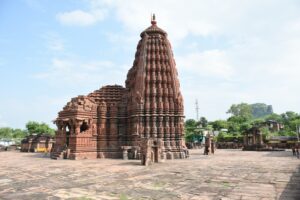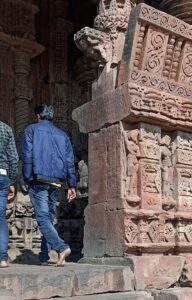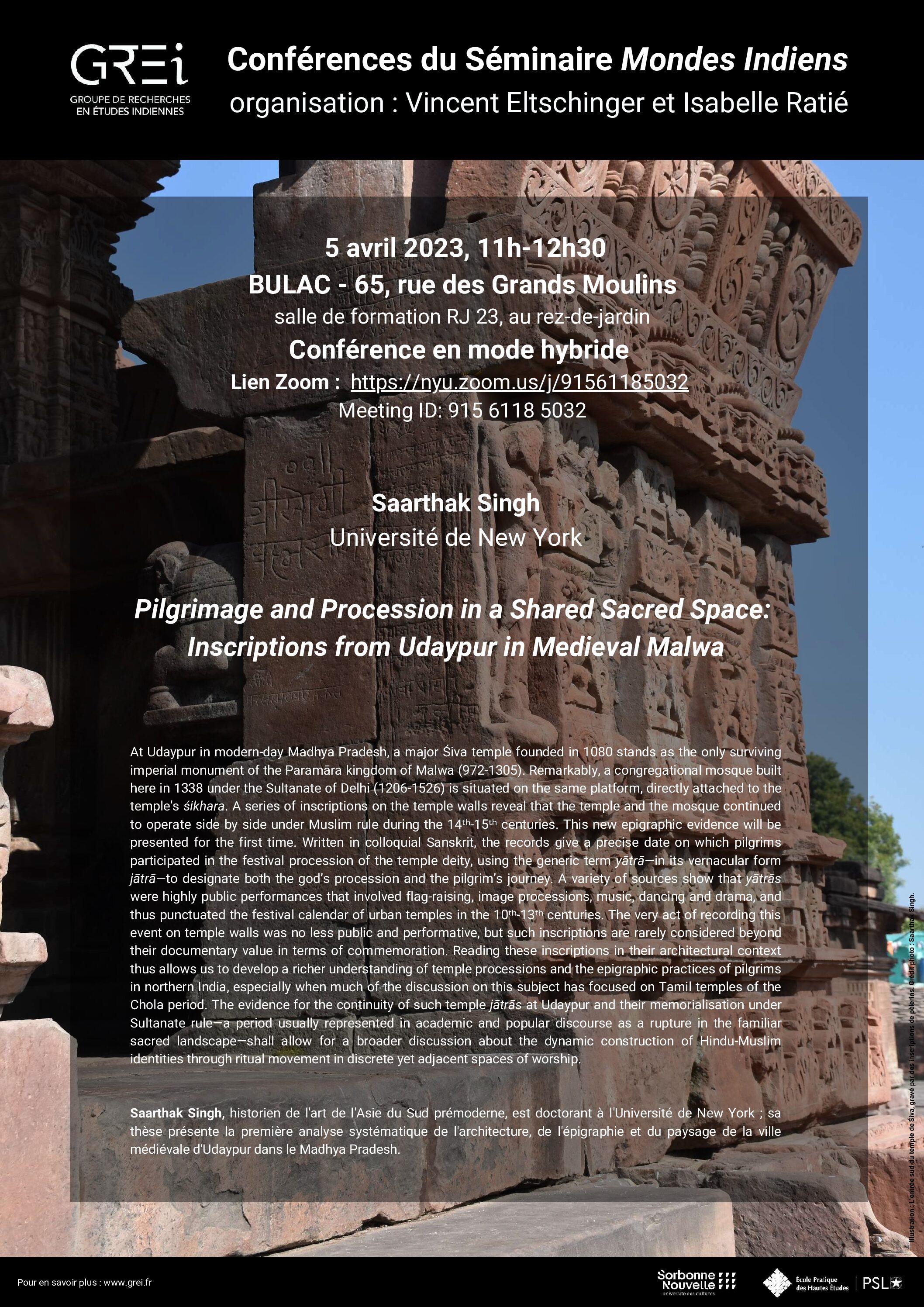Présentation de la conférence
ATTENTION – La conférence est reportée au mercredi 5 avril 2023, de 11h à 12h30. Elle se tiendra en mode hybride depuis la BULAC.
Nom du conférencier : Saarthak Singh, doctorant en histoire de l’art à l’Université de New York et chercheur doctorant invité à l’EPHE.
Titre de la conférence : « Pilgrimage and Procession in a Shared Sacred Space: Inscriptions from Udaypur in Medieval Malwa »

Légende : Le temple de Śiva à Udaypur, Madhya Pradesh, Inde, fondé en 1080. Crédit photo : Saarthak Singh.
Résumé : At Udaypur in modern-day Madhya Pradesh, a major Śiva temple founded in 1080 stands as the only surviving imperial monument of the Paramāra kingdom of Malwa (972-1305). Remarkably, a congregational mosque built here in 1338 under the Sultanate of Delhi (1206-1526) is situated on the same platform, directly attached to the temple’s śikhara. A series of inscriptions on the temple walls reveal that the temple and the mosque continued to operate side-by-side under Muslim rule during the 14ᵗʰ-15ᵗʰ centuries. This new epigraphic evidence will be presented for the first time. Written in colloquial Sanskrit, the records give a precise date on which pilgrims participated in the festival procession of the temple deity, using the generic term yātrā—in its vernacular form jātrā—to designate both the god’s procession and the pilgrim’s journey. A variety of sources show that yātrās were highly public performances that involved flag-raising, image processions, music, dancing and drama, and thus punctuated the festival calendar of urban temples in the 10ᵗʰ-13ᵗʰ centuries. The very act of recording this event on temple walls was no less public and performative, but such inscriptions are rarely considered beyond their documentary value in terms of commemoration. Reading these inscriptions in their architectural context thus allows us to develop a richer understanding of temple processions and the epigraphic practices of pilgrims in northern India, especially when much of the discussion on this subject has focused on Tamil temples of the Chola period. The evidence for the continuity of such temple jātrās at Udaypur and their memorialisation under Sultanate rule—a period usually represented in academic and popular discourse as a rupture in the familiar sacred landscape—shall allow for a broader discussion about the dynamic construction of Hindu-Muslim identities through ritual movement in discrete yet adjacent spaces of worship.
Informations pratiques
ATTENTION – La conférence est reportée au mercredi 5 avril 2023, de 11h à 12h30.
Elle se tiendra en mode hybride depuis la BULAC. Aucune inscription formelle n’est à faire auprès de la Bulac, il faudra seulement se signaler à l’accueil du rez-de-chaussée pour avoir accès à la bibliothèque, à titre exceptionnel, pour suivre la conférence.
Adresse : 65 Rue des Grands Moulins, 75013 Paris.
Salle : salle de formation RJ 23, au rez-de-jardin.
Lien Zoom : https://nyu.zoom.us/j/91561185032 (Meeting ID: 915 6118 5032)

Légende : L’entrée sud du temple de Śiva, gravé par des inscriptions de pèlerins. Crédit photo : Saarthak Singh.

